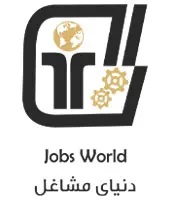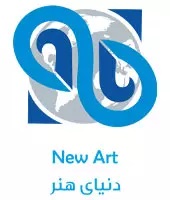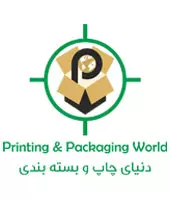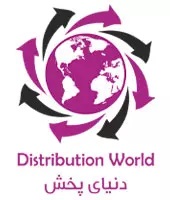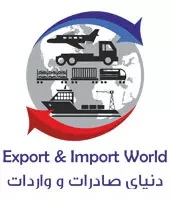- Chapter1 -Consulting and Marketing
- Chapter2 – Designing, Photography, Filmmaking
- Chapter3 – Printing, Packaging, Post-print
- Chapter 4- Environmental Advertising and Exhibition Services
- Chapter 5 – Audiovisual Advertising and Electronic Marketing
- Chapter 6 – Advertising gifts
- Chapter 7- The world of distribution
- Chapter 8- Export and Import
2-1- Hardware and Software Optimization of Manufacturing and Service Units (Manufacturing -Packaging-Administrative Optimization)

Business process management is tied to concepts such as business process optimization. In processes other than recognition and modeling, we seek to find the most optimal modes.
Definition of Job and Business Process Optimization
Optimizing the business process means organizing and adjusting the process of a process in order to optimize specific parameters without considering some limitations so that we can make the best or most effective use of them.
The Meaning of Business Process Optimization
Process optimization can be used in many fields, but in the field of business processes, this optimization refers to an existing process that is used to improve and direct the activities of this process, which is currently known as “Business Purpose” is defined. Therefore, when we talk about optimizing the business process, we are actually talking about the process that is currently operating, and we are keeping this process, and we only recognize where this process is flawed, what can be added to it. , how to make the necessary improvements and improvements, and then check that the process continues to operate in the same way you intended, but with better and improved performance.
Business Process Optimization
There is no clear-cut method for process optimization that everyone agrees on. There are many options you can use to do this process.
Business Process Optimization Methods
DMAIC
This technique is a six sigma technique in optimizing business processes that happens almost completely during the automation of business processes.

Business Process Optimization
DMAIC is derived from the beginning of the following words:
- Define: means to determine
- Measure: means to measure
- Analyze: means to analysis
- Improve: means to improve and correct
- Control: means to control and supervision
This method provides a robust data-driven approach to business process optimization in a large organization that includes many stakeholders. The goal of the DMAIC technique in the six sigma framework is to find output defects, trace them that are related to the main processing problems, and then find ways to improve the process of dealing with these problems. As a result, through the six sigma method in managing business processes, it reduces output waste.
Process Optimization Based on Data Mining
Obviously, the process based on data mining is not a method by itself. But it is a very important part of modern process optimization methods. What data mining can provide you with is an instant overview of your current process and how it is performing. This process is often referred to as “business process automation”. You can give the data mining process tool a large input of data about an activity and use the software to find out what is happening, how and by whom. Then you can map all this in different ways and then see pictures of how your business process is.

PDSA Cycle (Plan-Do-Study-Act) in Process Optimization
PDSA, different from the Deming cycle, is a 4-step process designed with a business building and improvement approach. This theory discusses process optimization well. So that it is the scope of its attention to find and improve the idea of quality throughout the business operations. Quality theory is of interest here, and it reduces defects much more easily than Six Sigma theory.
The four stages of this cycle are:
- Plan
In the Plan phase, you must determine your quality concept. Here you need to identify the aspects you want to improve in terms of quality and determine how you want to improve this quality. Accurate forecasts are very important at this stage and show that you have a comprehensive understanding of your business system.
- Do
In the next stage, which is the Do stage, is the implementation of these improvements, and this is done in a completely controlled manner. If you can use control groups or automated studies at this stage, then you can have better comparative data in understanding the variables that affect the results.
- Study
The study phase in PDSA is different from this phase in the PDCA cycle. In PDCA you check if the results are good or not and it doesn’t matter if your output has increased, defects and waste have decreased, etc. But Deming rejected this method in PDSA to study the results. At this stage, you actually want to quantify the many aspects of the new process and its outcomes that can be measured.
- Act
The Act phase can be where you implement new process improvements across a wide range of your operations. Maybe you want to make other plans for the progress and improvement of your business by using the changes you noticed in the reading section.
As per the theme of continuous improvement, this cycle starts again when it is finished.
15 Practical Methods in Business Process Optimization:
Are you familiar with ways to optimize your business process? Your business culture or philosophy is the ultimate key to your efficiency and success, an element that helps optimize your business. It also makes you active or inactive in your business.
When you work with clients, you’ll soon realize that if the culture of an organization is wrong, the effectiveness of even the best business growth techniques will be severely limited or made to appear flawed. Many organizations are overly sensitive to these factors and as a result constantly strive to make real progress and improve the optimization of their business. Developing the right business culture is a key to your success because everything you do depends on this fundamental aspect of your business.

Get to know 15 Practical Methods in Business Process Optimization:
- Know your higher goals
- Work with honesty
- Optimization
- Appreciate your team honestly
- Sincerely appreciate customers
- Be enthusiastic about your customers
- Build a balanced team
- Give authority to your employees
- Have fun at work
- Optimization through continuous training
- Hire the right people
- Implement your proposed plan
- Measure the motivation of your employees
- Determine short-term and long-term business goals
- Know your strategies
Here we examine the optimization of manufacturing, packaging, administrative structure, which are considered to be the most important optimization items:
1- Optimizing Products
In today’s world where competition is important, optimization of manufacturing systems is extremely important. Among the optimization techniques of manufacturing systems are the scientific methods of manufacturing planning, which are generally based on research techniques in operations. Today, unlike in the recent past, the only goal of institutions is not to achieve high profits, but managers and shareholders of companies, in addition to this goal, want access to other goals such as cost reduction, a suitable position in the market, high market share, etc. Therefore, the program model ideal planning is a suitable mathematical model for achieving multiple and conflicting goals.
Managers and those involved in manufacturing and industry have always sought to obtain a suitable method to measure the performance of their production line in relation to changes in the quality of raw materials, parameters of the manufacturing process and finally how to achieve the ideal product.
4 key factors that can be effective in optimizing manufacturing:
First; to be able to develop skilled human resources for education and skill training
Second; new technologies should be used in industries because the use of new technologies brings high added value and most industries that use advanced technologies become advanced industries over time.
The third factor refers to the stability of manufacturing and industrial enterprises in the production cycle and the arena of competition. In order to achieve this stability and updating, research and development units are necessary, and on the other hand, university capacities should also be used to update the production cycle.
The fourth factor refers to the use of new technologies and the short life of some technologies. Therefore, innovation should be created in the manufacturing process, which can be created by using research and development units.
In general, these 4 factors will make the output of manufacturing and industrial companies have high productivity, good quality, reduce manufacturing cost and competitive price and sell their products in domestic and international arenas.
2- Optimizing Packaging
Product packaging and its optimization is considered as an important tool in marketing and has a significant impact on brand recognition and durability.

Some believe that the packaging is as important as the size of the product. About 52% of people around the world make their purchasing decisions based on packaging.
Importance of Packaging Optimization
The packaging of a product is the most important factor that distinguishes it from other brands and is considered a key tool to communicate with the customer. If packaging was unimportant, the design of all packaging would be considered without visual elements, with uniform content and nature. Product packaging and its optimization is considered as an important tool in marketing and has a significant impact on brand recognition and durability.

The most important strategy in the field of creating and packaging a product is added value. Since the price of products in the market is not fixed and fluctuates, packaging should play a clear role in relation to this valuation for the consumer. Products that promote added value by relying on the brand are more considered in terms of design and visual appearance. Examining the case examples shows how, for example, an attractive design of healthy and natural food attracts the attention of the audience with its beauty and simplicity. In a successful packaging, it is possible to distinguish what is going to be displayed in it and exactly what is not to be displayed. Designing a package can be exciting, fun and appetizing if needed.
Another strategy for optimizing packaging is to consider it as a sales vehicle. This method is based on a solution to sell a product. Based on this, the common needs of the target audience of a product are considered. After that, providing an integrated and coordinated solution to meet this need is the most important proposition for optimizing value-based packaging. To find solutions to meet the needs of the audience, you can focus on the mechanism of product performance and special solutions related to the product and packaging.

Four Main Parts in Packaging Design
In a smart packaging, the content is divided into four main and essential parts:
1- Brand name
2- The product inside the package
3- Product benefits
4- The basic characteristics of the product (taste, aroma, etc.)

Optimization of Packaging Cost
Today, the trend of manufacturers towards retail ready packaging (RRP) has created a new science in the field of packaging cost optimization. RRP has many benefits for customers and retailers. It has made it possible for retailers to use this method to arrange the shelves as quickly as possible and make them easily available to customers. With Packaging Optimization, you can easily evaluate the performance of your packaging at every stage of the supply cycle, from shipping to shelf placement. And with this method, when the buyer decides which product to buy, you make it easy for him to choose.
Optimum Retail Packaging (RRP) Features
- The possibility of placing more products in the specified range on the shelf
- Faster filling in the store
- Easy access
- Easier export possibility with RRP export packaging carton
- Increase in buying and selling
- Ability to view the product and easy navigation for buyers
- Using fewer pallets in packaging
- Reducing the traffic of delivery vehicles on the roads
- Efficient packaging, automatic or non-automatic
One of the important features of optimal packaging in export packaging cartons, with this method, the packaging pallets can accommodate a larger number of products. And it enables the sending of a large volume of products with the least amount of traffic on land, sea and air routes, which is very effective in reducing transportation costs. Over the past few years, retailers have realized that they can cut a significant amount of costs by reducing the number of hours spent restocking shelves that are in the public eye of customers. Accordingly, factories and wholesale companies have gone to RRP to answer this issue.

Advantages of packaging cost optimization
- Easy to find
- Open easily
- It can be easily arranged on the shelf
- Easily disposed/recycled
- Easy to buy
Among the advantages of packaging optimization is that it helps you a lot in the art of marketing and packaging branding. By using this method, you will intelligently lead the buyer to choose your product. And you increase your sales rate. Those who use the RRP or product optimization method, that is, they have realized the importance of packaging in consumer behavior and know that the use of new scientific methods in the packaging industry has a significant effect on increasing the sales rate of the product.
The method of Optimizing the Cost of Packaging for Sale
If we want to have a brief definition of the sales function of packaging, we can say: the package should promote the sales process in an efficient way, therefore, for this purpose; the optimization method of packaging for sales should be used. Since it is difficult to reach consumers these days and other traditional advertising and marketing methods do not attract enough attention from buyers; Business owners and advertisers are constantly trying to find creative ways to draw even the tiniest bit of attention to their products. Creating an effective packaging design is one of the easiest and most cost-effective ways to do this, but it requires originality, difference and the ability to connect with consumers. By following the following items in packaging, it will be effective in increasing product sales to an acceptable extent.
- Good packaging should always be simple and affordable as far as it is compatible with the desired performance.
- The packaging should be close to the physical characteristics of the product and compatible with the materials of the product.
- All packaging materials should be standardized if possible. If multiple factories are involved in the packaging operation, having standards is an absolute necessity.

Now more than ever, packaging technicians must design with the end-of-life packaging in mind; As a result, packaging professionals are required to fully explain to the manufacturer and the buyer how a package works, who uses it, and the simplest and most appropriate format for reuse or recycling. There is no fixed method and strategy in the packaging industry and this industry is constantly updating and improving. But paying attention to the target audience’s taste in the packaging selection strategy constantly overshadows the competitive markets. So always find out about the tastes of your product audience before your competitors and design and package the product in the most optimal way so that you have a high retention rate in the market.

3- Optimizing Administrative Structures
Organizations, like ships at sea, need certain structures, hierarchies and processes to navigate the sometimes stormy waters that make it difficult to reach their destination. Different ships exist to meet different needs, but they require a clear chain of command and strict and enforceable policies to ensure that ships operate with maximum safety and efficiency. Ships are examples of organizations that need clear and effective policies and hierarchies to achieve their goals. By understanding how to implement various types of organizational structure and how these structures support organizations using their challenges and benefits, one can decide which one is suitable for the respective business for greater efficiency, competitive power, profitability and more.
Types of organizational structure
In general, organizational charts can include the following:
Mechanistic: highly centralized, specialized, and formal administrative structures with strict parameters for control, roles, and processes
Organic: Decentralized structures with minimal specialization and emphasis on performance and capabilities rather than prescribed roles and functions.
As a rule, mechanical organizational charts are suitable for policy-oriented and high-accountability purposes, but they can stifle creativity with their strict control. Organic structures are ideal for startups, small businesses looking to build their brand, and larger companies that need extreme flexibility and adaptability to meet changing consumer expectations, market conditions, or competitive challenges.
Types of mechanical organizational structure
From small businesses to large global organizations, companies around the world typically rely on four different types of organizational structures in the mechanistic model, which are as follows:
Functional Structures
It refers to structures in which team members are grouped into different groups based on their common skill set, expertise, accountabilities, and goals. Communication and decision-making are improved by physical proximity and sharing of tools and information. Examples of functional structure include information technology (IT) and accounting-based organizations.

Divisional Structures
This structure focuses the organization’s activities around specific groups (e.g., markets, goods and services, customer demographics, etc.). This type of organizational chart allows teams to collaborate on broad and shared organizational goals while maintaining a primary focus on their specific goals. The partial structures include the following:
Geographic: For example, teams produce similar products with local customization for different markets.
Product-based: For example, different departments all focus on a specific product within a broader product line.

Matrix Structures
It combines functional structures with segmented structures in a network arrangement such as vertical functions (e.g., organizational roles and titles) with horizontal divisions (e.g., product line managers). A matrix organization decentralizes decision-making and increases autonomy by increasing simultaneous cross-functional collaboration to increase overall productivity and encourage innovative approaches to problem solving.

Hybrid Structures
Similar to matrix structures, but arranged in favor of a hierarchical arrangement where business activities can have functional or divisional objectives. This popular approach allows sharing of data and resources while maintaining specific expertise.

Hybrid Structures
Similar to matrix structures, but arranged in favor of a hierarchical arrangement where business activities can have functional or divisional objectives. This popular approach allows sharing of data and resources while maintaining specific expertise.

Circular Structures
They are hierarchical, but instead of a straight ladder or pyramid arrangement, they place high-level employees and leaders in the center and inner rings of a circle, and lower-level employees in the outer rings. This structure is intended to encourage the dissemination of information and inspiration from the center and to allow the various departments to be considered as components of a unified whole.

Flat Structures
They move away from the traditional hierarchy with an organic and more detailed approach. Instead, this structure tries to minimize the gap between functions and roles by limiting the level of management. In flat structures, managers and executive employees have a collaborative role and close cooperation with team members and project managers rather than having a supervisory role.

Network Structures
It is slightly different compared to its counterparts because this structure is usually used when an organization collaborates and shares resources with another organization. This can be in the form of two companies working together or one large organization with multiple departments located in different locations with their own leadership and methods. Network structures are similar to sector structures but may allocate activities and business roles based on outsourced services rather than product lines or target demographics.

Advantages and Disadvantages of Various Organizational Structures
Although there is no one right type of structure for building a successful business, any business needs an organizational structure if they want to operate more efficiently, expect accountability, and compete effectively. Choosing the right organizational structure begins with knowing the pros and cons of each organization chart and how they affect a company’s business activities. For this reason, below we point out the advantages and disadvantages of different types of organizational structure:
Functional Organizational Structure

Advantages:
It supports significant employee expertise.
Organizations with a mechanistic and vertical functional structure allow employees to devote time and talent to mastering their role.
Simplifies financial analysis, reporting and overall data management
Disadvantages:
Silos (Task Structure) can reduce productivity and create barriers to completing work.
By requiring a formal policy for each, it can increase costs in organizations with a large number of products, target markets, etc.
Rigidity and highly formal hierarchies can hinder collaboration and innovation.
Sectorial Organizational Structure
Advantages:
It enables the rapid development and deployment of new products for small companies (structure divided by product).
It is versatile and fully specialized for quick, accurate response to changing consumer behaviors or market intelligence. (Structure divided by market).
It provides customization and localization of goods and services to ensure availability of incoming goods and services or rapid response to customer needs (geographic segmentation structure).
Simplify the performance structure, share financial analysis and reporting.
Disadvantages:
Scalability is difficult and silos may lead to duplication of effort among isolated departments (product-based segmentation structure).
Too much independence prevents communication and cooperation (segmentation structure based on the market).
Physical distance can create independence and decentralization that hinders efforts at coordination and instead encourages competition and duplication of effort (geographic segmentation structure).
Matrix Organizational Structure
Advantages:
It provides flexible and nuanced collaboration and decision-making through dual chains of command.
Provides support for common resources and direct communication between projects and departments.
More cooperation and communication leads to innovation and creativity.
Disadvantages:
Highly complex multiple reporting relationships can place a member on multiple teams, making it difficult to track budget requests and resource usage.
Financial forecasting and analysis can be challenging due to lack of ambiguity in reporting.
Tracking and optimizing key performance indicators (KPI) for productivity and cost may be less accurate than desired.

Hybrid Organizational Structure
Advantages:
Versatile and scalable while allowing resources to be allocated and consumed based on functional or segmentation needs.
Ideal for small businesses, where team members may take on multiple roles
It can more effectively take advantage of market disturbances to protect business continuity and take advantage of innovation or growth opportunities.
Disadvantages:
Depending on the configuration used, it can be complex and mimic the problems of the matrix structure model.
Ambiguity can make it difficult to resolve authority issues and create interpersonal conflicts.
In large and complex companies, the workload may necessitate more supervision and management to protect employees from burnout.
Process Organizational Structure
Advantages:
Fast and flexible for all kinds of business needs
It enables robust data collection and analysis through direct tracking of their activities and interactions.
It provides opportunities to streamline workflows to improve project and department specific processes as well as overall business process management.
Disadvantages:
Multiple interdependencies can cause delays and harm productivity and efficiency if not properly managed.
Communication and data silos can develop over time.
It requires additional resources to ensure effective data collection and management to achieve process optimization.
Circular Organizational Structure
Advantages:
Provides strong and focused leadership and vision
Supports communication and collaboration across departments and encourages a spirit of common purpose to improve resource sharing and decision making.
Self-stable, distribution of tasks and strong cooperation against disruptions caused by staff changes
Negative items:
It can be confusing for those who are used to traditional hierarchies.
It may require additional resources and training to ensure optimal purchase and performance.
Flat Organizational Structure
Advantages:
It is very precise and not strict.
It reduces stress and can be useful for increasing team spirit and improving cooperation along with traditional hierarchies.
Negative items:
A lack of traditional hierarchy can cause disagreements in flat organizations, stall progress, and hurt efficiency and performance.
It requires extensive planning and detail to be effective.
It is likely to require contingency plans to resolve conflicts that cannot be easily resolved to ensure that business activities are not disrupted.

Organizational Structure of the Network
Advantages:
It is versatile, scalable and adaptable.
It allows companies to outsource their business activities to free up employees to focus on higher value strategic tasks.
It allows companies with multiple satellite locations or remote divisions to work together as an integrated whole.
Disadvantages:
Without careful planning, it can quickly become complex, confusing, and difficult to control.
For a wide range of autonomous locations working with multiple interdependencies, it requires clear and accessible information about accountability, reporting roles and specific business activities.
High potential for duplication of effort without close monitoring (e.g., different locations working on similar products or multiple marketing departments developing competitive campaigns)
Businesses that attempt to navigate the commercial seas without an effective organizational structure will soon find themselves in choppy waters. Choosing the best org chart will help you monitor and improve your business activities and ensure that all members of your team are communicating and collaborating effectively to achieve goals, better growth, profitability and competitive performance.
At NewWorld International Holding in the “World of Jobs” department, we help you optimize your job, both in terms of software and hardware, in order to use the best methods and latest theories and with the highest scientific method. Achieve your desire, which is stability in the market and receiving more shares than that.
Products categories
- Services
- Chapter1 -Consulting and Marketing
- Chapter2 - Designing, Photography, Filmmaking
- Chapter3 - Printing, Packaging, Post-print
- Part 5: Printing projects and related industries
- 5.1) Lithography
- 5.2) Offset printing
- 5.3) Digital printing
- 5.4) Printing PVC sheets
- 5.5)3D printing
- 5.6) Metallization printing
- 5.7) Talaq Printing
- 5.8) Print on fabric
- 5.9) Printing and burning CD
- 5.10) CNC and laser printing (engraving)
- 5.11) Gold blocking-hot stamping-embossed stamping
- 5.12) Tampo printing
- 5.13) Silk printing
- 5.14) Printing on metal
- 5.15) Printing on stone
- 5.16) Thermal printing
- 5.17) Roll printing
- 5.18) Large format printing
- 5.19) Seal and gelatin
- 5.20) Types of coatings
- 5.21) Molding
- 5.22) Stamping
- 5.23) Sticky box
- 5.24) Assembly
- 5.25) Post-press services
- 6. Technical office services
- 7. Binding
- part 8 - Holograms and Types of Labels
- 9. Packaging industries
- 9.1 Box
- 9.2 Board cover
- 9.3 Plexi boxes & Vaccum Forming
- 9.4 Fantasy boxes
- 9.5 Laminate and inner cover
- 9.6 Carton
- 9.7 Shrink
- 9.8 Air bubble nylon
- 9.9 Disposable food containers
- 9.10 Plastic containers
- 9.11 General format
- 9.12 Board can
- 9.13 Jar glass containers
- 9.14 Manufacturing sacks and industrial packets
- 9.15 Manufacturing and selling machineries
- 9.16 Food container
- part 10 - Shopping bag
- Part 5: Printing projects and related industries
- chapter4:Environmental Advertising and Exhibition Services
- Chapter 5 - Audiovisual Advertising and Electronic Marketing
- Chapter 6 - Advertising gifts
- part 24- Advertising gifts
- 24.1 Stationery
- 24-2 Stationary set
- Main brand stationary set
- Stationary set of CROSS brand
- Stationary set of SHEAFFER brand
- CANDID
- GHANARY desktop set
- Stationary set of WATERMAN
- Stationary set of PARKER
- Stationary set of HANSA
- Stationary set of PORTOK
- Stationary set of MELODY
- Stationary set of EUROPEN
- Stationary set of DIPLOMAT brand
- Stationary set of PIERRE CARDIN brand
- Miscellaneous brands' set (pen – fountain pen)
- Main brand stationary set
- 24.3 Card case
- 24.4 Keychain
- 24.5 Lighter
- 24.6 Ashtray
- 24.7 Main clothes (advertising cloth)
- 24.8 Subsidiary clothes
- 24.9 Advertising hat
- 24.10 advertising towel
- 24.11 Advertising cover
- 24.12 Advertising radio
- 24.13 Advertising clock and wristwatch
- 24.14 Advertising mug mat
- 24.15 Advertising mouse pad
- 24.16 Advertising car sunshade
- 24.17 Leather artifacts
- 24.18 Advertising document cover
- 24.19 Advertising folder and writing pad
- 24.20 Advertising index file and Zoonckan
- 24.21 Advertising bag and wallet
- 24.22 Advertising balloon
- 24.23 Advertising ruler
- 24.24 Advertising puzzle
- 24.25 Children's advertising gifts
- 24.26 Postcard
- 24.27 Advertising magnet (magnetic stickers)
- 24.28 Plexi file and bag
- 24.29 Advertising tissue and tissue box
- 24.30 Sculpture-pottery-tile
- 24.31 Advertising containers
- 24.32 Calculator
- 24.33 Office papers-fantasy paper-notepad
- 24.34 Lighting advertising gifts
- 24.35software gift
- 24.36 Advertising photo frame
- 24.37 Advertising photo album
- 24.38 Handicrafts
- 24.39 Special religious gifts
- 24.40 Doll making
- 24.41 Advertising tools
- 24.42 Women's special gifts
- 24-43) mobile accessory
- 24.44 Electronic gifts
- 24.45 Advertising hand fan
- 24.46 Special medical gifts
- 24.47 Advertising opener
- 24.48 Advertising (woven) carpet tableau
- 24.49 Advertising desktop set
- 24.50 Advertising air freshener
- 24.51 Umbrella
- 24.52 Advertising meter
- 24.53 Advertising tape dispenser
- 24.54 Optical advertising gifts
- 24.55 Advertising compass
- 24.56 Advertising thermometer
- 24.57 Automobile advertising gifts
- 24.58 Special gifts
- 24-59) Wooden promotional gifts
- part 25 - 26 - Almanac and telephone directory
- 27. Calendar
- part28- 27.1 Exquisite books
- part 24- Advertising gifts
- Chapter 7- The world of distribution
- Chapter 8- Export and Import
Online price inquiry
"*" indicates required fields
Quick access
- Chapter1 - Consulting and Marketing
- Chapter2 - Designing, Photography, Filmmaking
- Chapter3 - Printing, Packaging, Post-print
- Chapter4 - Environmental Advertising and Exhibition Services
- Chapter5 - Audiovisual Advertising and Electronic Marketing
- Chapter6 - Advertising gifts
- Chapter 7- The world of distribution
- Chapter 8- Export and Import


